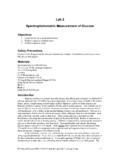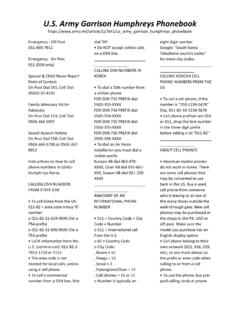Transcription of sample exam ver2 answers
1 Introductory Biology name_____. Dr. S. G. Saupe sample Exam answers Cauliflower is nothing but a cabbage with a college education. Mark Twain General Instructions: Answer the multiple choice questions on the computerized sheet in pencil. Be sure to code in your ID number correctly and write your name on the answer sheet. Non-multiple choice questions should be answered directly on the pages provided. Please make sure your name is on each sheet before handing it in. Please sign the pledge at the end of the exam if you have complied with its terms ( , do your own work). Have fun, and we hope that you're feeling more like a cauliflower than a cabbage!
2 Multiple choice questions: Darken the single, best choice in the appropriate place on the answer sheet. There are no "known" tricks! (1 point each). 1. Vascular plant tissue includes all of the following cell types EXCEPT. a. vessels. d. companion cells. b. sieve cells. e. cambium cells. c. tracheids. 2. The photosynthetic cells in the interior of a leaf are what kind of cells? a. parenchyma d. phloem b. collenchyma e. endodermis c. sclerenchyma 3. Which functional plant cells lack a nucleus? a. xylem only b. sieve tube cells only c. companion cells only d. both companion and parenchyma cells e.
3 Both xylem and sieve tube cells 4. The fiber cells of plants are a type of a. parenchyma. d. meristematic cell. b. sclerenchyma. e. phloem cell. c. collenchyma. 5. One important difference between the anatomy of roots and the anatomy of leaves is that a. only leaves have phloem and only roots have xylem. b. the cells of roots have cell walls that are lacking in leaf cells. c. a waxy cuticle covers leaves but is absent in roots. d. vascular tissue is found in roots but it is absent from leaves. e. leaves have epidermis, while such tissue is absent from roots. 6. What tissue makes up most of the wood of a tree?
4 A. primary xylem d. mesophyll cells b. secondary xylem e. vascular cambium c. secondary phloem 7. All of the following cell types are correctly matched with their functions EXCEPT. a. mesophyll/photosynthesis. b. guard cell/regulation of transpiration. c. sieve tube member/translocation of sugars. d. vessel element/water transport. e. companion cell/formation of secondary xylem and phloem. 8. Which of the following root tissues gives rise to secondary roots? a. endodermis d. epidermis b. phloem e. pericycle c. cortex 9. Additional vascular tissue produced as secondary growth in a root or stem originates from which cells?
5 A. vascular cambium d. phloem b. apical meristem e. xylem c. endodermis 10. A student examining leaf cross sections under a microscope finds many loosely packed cells with relatively thin cell walls. The cells have numerous chloroplasts. What cells are these? a. parenchyma d. collenchyma b. xylem e. sclerenchyma c. endodermis 11. Pores on the leaf surface that function in gas exchange are called a. hairs. d. stomata. b. xylem cells. e. sclereids. c. phloem cells. 12. Bark a. is composed of phloem plus periderm. b. is associated with annuals but not perennials. c. is formed by apical meristems.
6 D. has no identifiable function in trees. e. forms annual rings. 13. The opening of stomata is thought to involve a. an increase in the osmotic concentration of the guard cells. b. a decrease in the osmotic concentration of the stoma. c. active transport of water into the guard cells. d. decreased turgor pressure in guard cells. e. movement of K+ out of guard cells. 14. The water within xylem vessels moves toward the top of a tree (long distances) as a result of a. active transport of ions into the vascular bundle. b. atmospheric pressure on roots. c. evaporation of water through stoma.
7 D. the force of root pressure. e. osmosis in the root. 15. According to the pressure-flow hypothesis of phloem transport, a. solute moves from a high concentration in the "source" to a lower concentration in the "sink.". b. water is actively transported into the "source" region of the phloem to create the turgor pressure needed. c. the combination of a high turgor pressure in the "source" and transpiration water loss from the "sink" moves solutes through phloem conduits. d. the formation of starch from sugar in the "sink" increases the osmotic concentration. e. the pressure in the phloem of a root is normally greater than the pressure in the phloem of a leaf.
8 16. Water entering the vascular bundle of the root from the cortex must pass through the a. Casparian strip. d. epidermis. b. phloem. e. xylem. c. endodermal cytoplasm. 17. George Washington completely removed the bark from around a cherry tree but was stopped by his father before cutting the tree down. It was noticed that the leaves retained their normal appearance for several weeks, but that the tree eventually died. The tissue(s) that George left functional was (were) the a. phloem. d. cortex. b. xylem. e. companion and sieve cells. c. cork cambium. 18. Arrange the following five events in an order that explains the mass flow of materials in the phloem.
9 1. Water diffuses into the sieve elements. 2. Leaf cells produce sugar by photosynthesis. 3. Solutes are actively transported into sieve elements. 4. Sugar is transported from cell to cell in the leaf. 5. Sugar moves down the stem. a. 2, 1, 4, 3, 5. b. 1, 2, 3, 4, 5. c. 2, 4, 3, 1, 5. d. 4, 2, 1, 3, 5. e. 2, 4, 1, 3, 5. 19. Photosynthesis begins to decline when leaves wilt because a. flaccid cells are incapable of photosynthesis. b. CO2 accumulates in the leaves and inhibits photosynthesis. c. there is insufficient water for photolysis during light reactions. d. stomata close, preventing CO2 entry into the leaf.
10 E. the chlorophyll of flaccid cells cannot absorb light. 20. Root hairs are most important to a plant because they a. anchor a plant into the soil. b. store starches. c. increase the surface area for absorption. d. provide a habitat for nitrogen-fixing bacteria. e. contain xylem tissue. 21. In plant roots, the Casparian strip is correctly described by which of the following? a. It is located in the walls between endodermal cells and cortex cells. b. It provides energy for the active transport of minerals into the vascular bundle from the cortex. c. It ensures that all minerals are absorbed from the soil in equal amounts.







